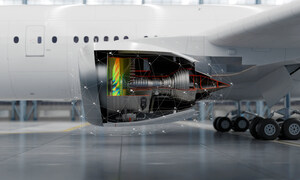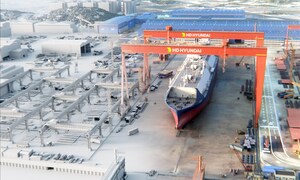WASHINGTON, March 2, 2012 /PRNewswire/ -- When President Obama called on the United States to double its exports by the end of 2014, business and political leaders were strongly supportive. After all, doubling exports should create roughly two million American jobs. Today exports already support almost 10 million jobs in the United States and have been responsible for nearly half of all U.S. economic growth since the middle of 2009. There's really no question that growing exports is central to America's future prosperity. But there is a question about how the U.S. can achieve this goal without the reauthorization of the Export-Import Bank.
(Logo: http://photos.prnewswire.com/prnh/20070904/SIEMENSLOGO )
Last month Congress delayed the long-term reauthorization of the Bank, a worrying development for companies who manufacture products in America and sell them around the world. In 2011, the Bank offered $32.7 billion in financing. That financing, in turn, spurred $40.6 billion in U.S. exports and supported nearly 300,000 export-related jobs. More than 3,600 companies were able to export products because of that financing. With the Export-Import Bank in place, the U.S. is actually on pace to meet President Obama's ambitious goal of doubling exports by the end of 2014. Without it, America will almost certainly come up short.
There is extraordinary power in the collaboration between innovative, export-savvy companies on one side and the Export-Import Bank on the other, making it imperative that the Export-Import Bank is reauthorized and its lending cap raised for a considerable period of time. This is especially important right now, when statistics show that manufacturing in America is on the march. According to the Labor Department, last year the U.S. added 136,000 jobs in manufacturing, the first time we've seen those numbers go up since 1997.
A perfect example of this collaboration can be found in Charlotte, North Carolina. There, Siemens recently opened a plant that manufactures the most advanced, most energy efficient gas turbine and is committed to making Charlotte a major export hub, selling "Made in America" turbines around the world. The first turbine off the line went straight to Mexico. The next ten, thanks to a $638 million direct loan from the Export-Import bank, are headed to Saudi Arabia. This is a billion dollar deal and it never would have happened if the Export-Import Bank hadn't provided this financing for the customer. These orders are supporting the work of 825 employees currently at this plant and 400 new employees.
The truth is, for all the talk about the decline of American manufacturing, of the widening of its trade deficit, the U.S. now has a unique opportunity to turn the conventional wisdom on its head. The Export-Import Bank has the ability to help sell America's higher technology products around the world while creating jobs for workers at home. And we know the rest of the world is eager to do business with the United States.
What's sometimes missed in stories about globalization is the exceptionally high regard the rest of the world has for American products. As a global company, Siemens sees power of the "Made in America" brand and the extent to which America is seen as a trusted business partner. And when you consider that only one percent of American companies export today, most just to a single market, it's easy to see how much potential is still left untapped, how essential the Export-Import Bank can really be.
America has an incredible opportunity to transform itself into the center of global manufacturing once again, a real chance to narrow its trade deficit substantially, and the ability to spur job creation. The U.S. can achieve these goals and more, but an essential first step is a long-term authorization of the Export-Import Bank.
SOURCE Siemens
WANT YOUR COMPANY'S NEWS FEATURED ON PRNEWSWIRE.COM?
Newsrooms &
Influencers
Digital Media
Outlets
Journalists
Opted In






Share this article